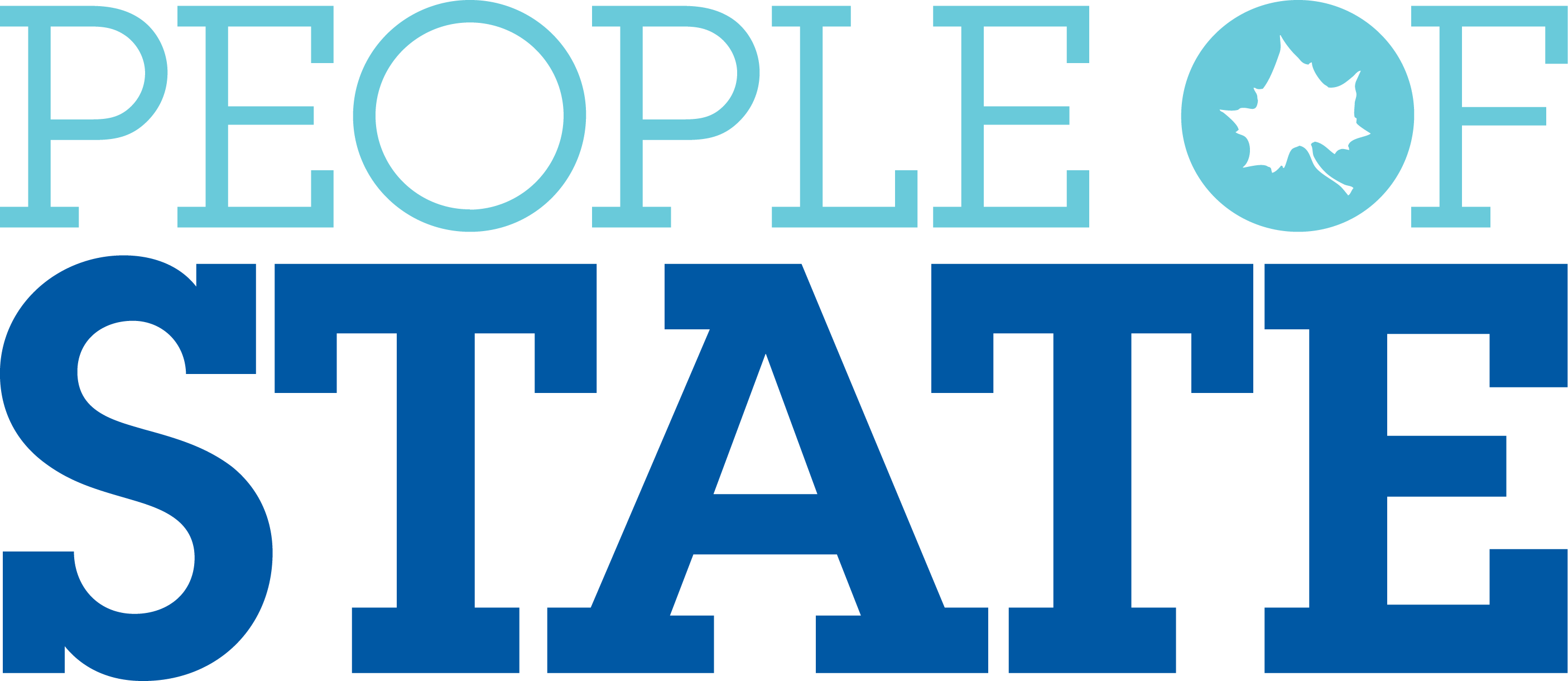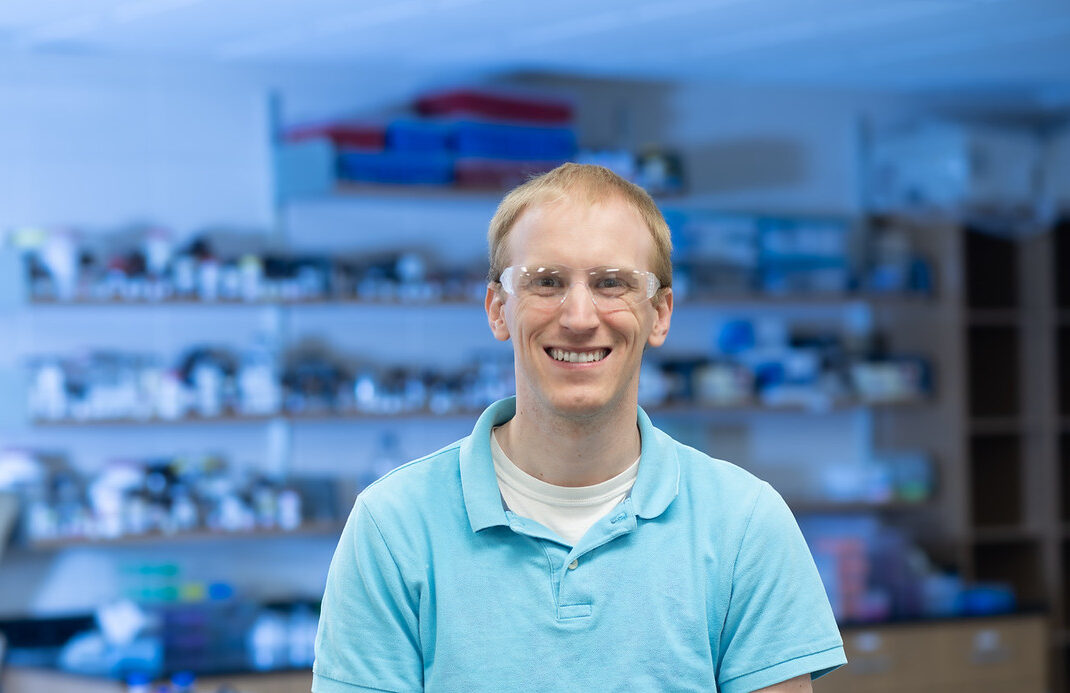
Justin Miller
By Kasy Long
Dec 3, 2024
Biochemistry Professor
From the soil beneath our feet to the complexities of human biology, Justin Miller, PhD, is on a mission to uncover the secrets of bacteria. The biochemistry professor at Indiana State University is fascinated by cytochrome P450s, a superfamily of enzymes that play a crucial role in various biological processes.
This scientific research has earned Miller a prestigious $248,930 grant from the National Science Foundation. The two-year grant not only fuels his research but also opens doors for underrepresented students at Indiana State to experience mentorship and hands-on lab activities.
“This grant will be used for students to understand their career possibilities, to be paid to work in lab spaces, and to mentor them. This is a launchpad for our students to understand their future careers,” Miller says.
Part of the grant will be used to invite alumni back to campus to meet with underrepresented students and first-generation students. He adds, “I want our students to have hands-on training and mentorship. They need to meet with working chemists and understand what they can pursue in the field.”
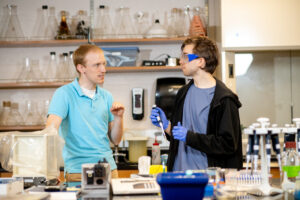
Miller’s journey began with his passion for chemistry, enzymology, and the plant kingdom. Bacteria are easy to work with, he says, and he is fascinated by the roles they play in biochemical processes.
A first-generation college graduate who received his BA from Wabash College and a PhD from the University of Illinois-Urbana, the Indiana native decided to give back to his home state in the way he knew best – teaching.
“My goal is to help students identify their calling and equip them with the appropriate resources to pursue their passion. I want them to succeed in every way possible,” Miller says.
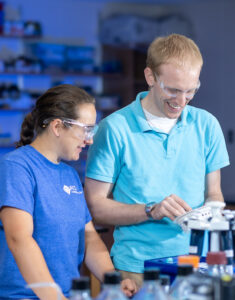
At Indiana State, Miller teaches general chemistry and biochemistry, classes in which he emphasizes the importance of scientific communication. His students are not only learning about chemical reactions; they are learning how to share their discoveries with the world.
“It’s important for students to understand what they’re learning in class but also know how to communicate this understanding with others. It’s one thing to study science, but you have to communicate it to others, too,” Miller explains.
The professor is proud of his students’ interest in new projects. This includes their contribution to Miller’s ongoing research on Pseudomonas aeruginosa, a versatile bacterium capable of thriving in soil, plants, and animals, including humans. Miller is investigating a newly identified enzyme, CYP168A1, to understand how it helps the bacterium adapt to different environments. This research could have significant implications for understanding bacterial behavior and human diseases.
“I’m looking forward to using the National Science Foundation grant to support my research and mentor students – whether it’s working in the lab or meeting with our successful alumni. The grant will provide more opportunities for students to work in the lab and understand biochemistry in a practical setting. I’m proud of my students for taking the initiative and wanting to be involved in the grant,” Miller comments.
For example, students have been able to write research proposals related to Miller’s research and their lab experiences. This provides even more preparation for their future careers, he says.
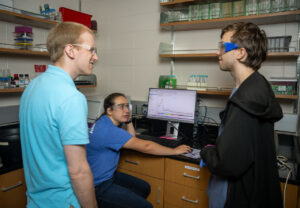
That’s exactly why faculty in Indiana State University’s Department of Chemistry and Physics invite students to engage in research – so that they develop essential skills to keep them motivated on their future goal: a career in science.
“Faculty at Indiana State understand their students. I relate to my students, and I want to mentor them to work hard now as undergraduates. Then, when they graduate, they’re able to engage in more research and pursue a very rewarding career path,” Miller says.
Through mentorship, Miller goes ALL IN on sharing his expertise with his students. As he attests, the research is never complete. There is always something new to learn in science – and Miller happily invites his students along on these exciting discoveries!
